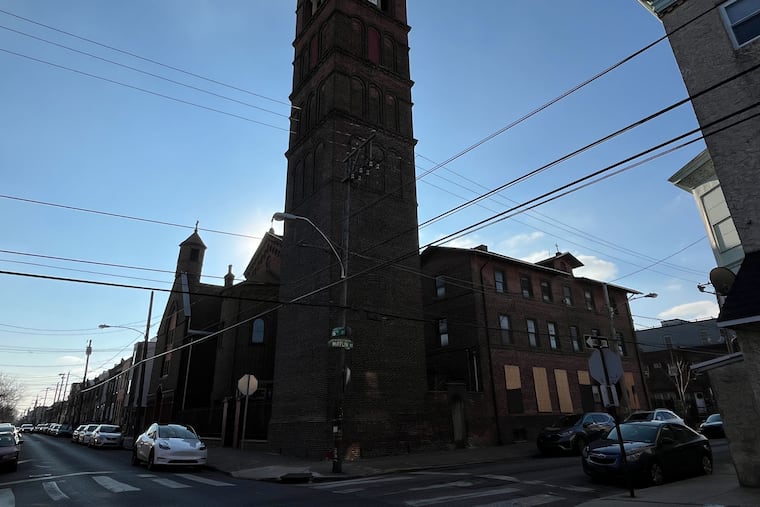A beloved South Philly church will be renovated into 33 apartment units and an event space
Rather than demolishing the historic church, formerly True Gospel Tabernacle Family Church, Atlis Real Estate Partners plans to repurpose the church in an area where demand for housing is high.

The Historical Commission has approved a plan to preserve and redevelop an imposing church complex at 1900 S. 16th St. that has defined this corner of South Philadelphia for over 120 years.
The new plan, from Atlis Real Estate Partners, proposes 33 residential units with a rentable event space in the sanctuary of the former True Gospel Tabernacle Family Church.
The proposal would preserve the complex, which has been historically designated since 1967. Atlis’ plan has been widely praised by preservationists, a victory after a 2021 plan for redevelopment flopped.
“We’ve seen too many historic churches lost in Philadelphia in recent years, and here is an exception that will hopefully serve as a model for future adaptive reuse of similar properties,” said Paul Steinke, president of the Preservation Alliance of Greater Philadelphia, at the Historical Commission’s December meeting.
Philadelphia has lost 12 historic places of worship since 2017, as the recent real estate boom has seen land values soar in long neglected neighborhoods. Between 2009 and 2016, 28 such buildings were demolished. Neighborhood icons like Christian Street Baptist Church or Union Baptist Church were leveled and replaced by new housing.
But by the numbers, Philadelphia’s track record of preservation is neck and neck with its demolitions.
Housing is the most common use for repurposed old religious buildings, according to Partners For Sacred Places, which works with congregations to save and find new purposes for old religious buildings.
The organization found that prior to 2017 two dozen churches had been repurposed as single-family homes or apartment buildings. A further 12 had been utilized for mixed-use purposes, similar to the plan for 1900 S. 16th St.
Since 2017, a further 12 church-to-housing proposals are planned, underway, or completed according to Partners For Sacred Places.
“The numbers are growing year after year,” said Bob Jaeger, president of the organization. “Not just in Philly, but in New York and Boston and other East Coast cities where the demand for housing is so high.”
There are substantial challenges with renovating historic churches into housing, and sanctuary spaces pose particular problems. The logistics are challenging because of the shape and size, and the efforts to change worship areas can provoke opposition as beloved neighborhood spaces are lost.
“Handling the sanctuary space is the trickiest question, because that’s the big space with the high ceiling and the soaring volumes and stained glass and other features that you don’t want to obscure or harm,” said Jaeger.
Adding two or three floors of apartments within a soaring sanctuary can, in Jaeger’s view, destroy the historic character of the space. (In most cases, Philadelphia’s preservation regulations only protect the exterior of a structure.)
Jaeger says that performance, community, or even commercial uses can better preserve the original intent of sanctuaries.
Atlis Real Estate Partners’ plans for 1900 S. 16th St. demonstrate one way of addressing that challenge.
The company’s architect, Janice Woodcock, declined to comment, but in documents presented to the Historical Commission, Woodcock describes a 4,300-square-foot event space for the sanctuary.
“This project was previously too complex to build and had too large residential units,” said Woodcock in a letter to the commission. “This scheme has a similar unit count but also generates revenue by providing a simple event space, reducing the construction costs.”
The stained glass will be removed and preserved on site, but otherwise the proposal for a rentable event space fits within Jaeger’s formula for the best reuses of sanctuary spaces.
“Housing is often a pressing need in a community,” said Jaeger. “From our point of view, [we hope] a historic church like that [can] be preserved in a way that keeps it as a civic place, a public place.”